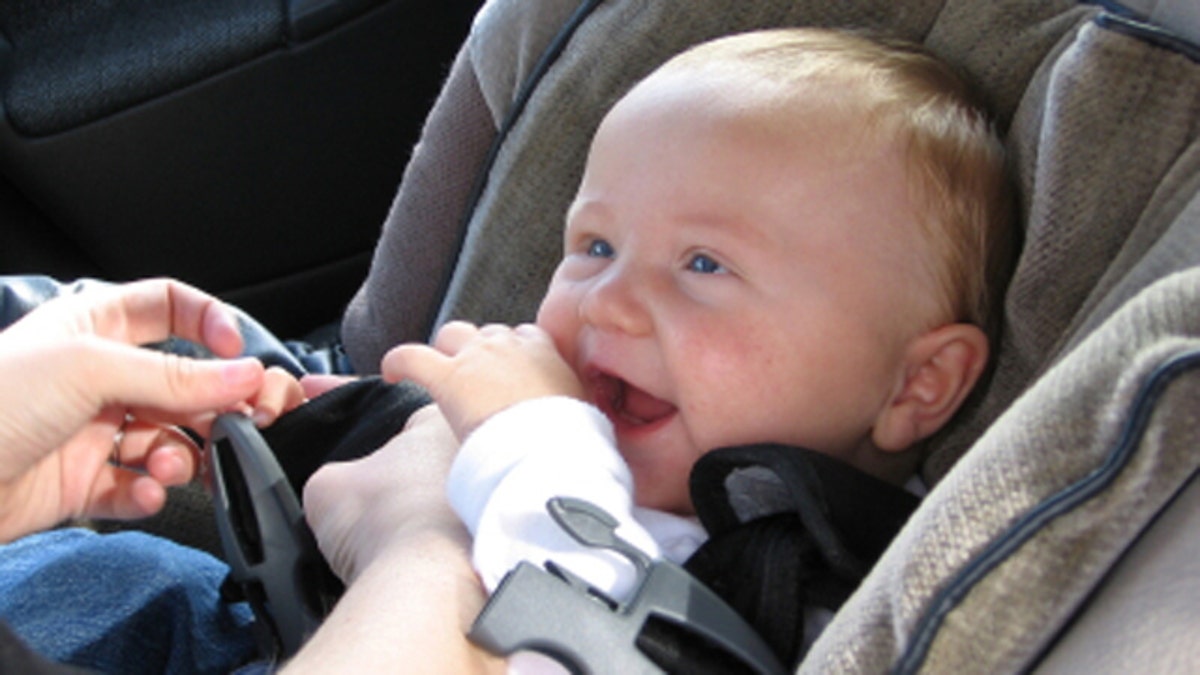
(iStock)
After a new baby arrives, one of the first products a parent uses is the car seat to take them home from the hospital.
But while the National Highway Traffic Safety Administration provides information on how car seats perform in crashes, one consumer research group is aiming to provide parents information about the chemicals that may be contained in the seat material.
Healthystuff.org, a project of the Michigan-based Ecology Center, looked at more than 150 new car seats and analyzed them for the presence of chemicals including bromine, chlorine, lead and other chemicals that have been linked to learning disabilities or other developmental problems. Researchers used X-ray fluorescence to determine the chemicals in each car seat.
Because it's unknown whether the chemical levels in car seats are high enough to cause harm, the researchers cautioned that the value of this study is secondary to the car seat's primary purpose.
"Car seats are a safety device," said Jeff Gearhart, research director for healthystuff.org. "Parents should use a car seat regardless of what our tests show. None of the results of our findings mean you shouldn't have a car seat, even if that car seat is the poorest one we tested."
Parents may want to use the ratings when purchasing a new seat when their child grows, Gearhart said.
The best and the worst
The top ranked chair was the Graco Turbo Booster in Anders, which was the only seat tested that did not contain any chlorine, bromine or the nine metals looked for in tests, the study said. With only trace amounts, the next-best ranked were the infant seats the Graco SnugRide 35 in Laguna Bay, the Chicco Keyfit 30 in Limonata and the Combi Shuttle 33 in Cranberry Noche.
The lowest ranked car seats were the Recaro Pro Booster in Blue Opal, because of high bromine and chlorine levels in the seat, and the Britax Marathon 70 in Jet Set, because of high bromine levels in the seat and clip, the study said.
Gearhart said his project was started to look at potentially hazardous chemicals in consumer products, but due to demand the project has focused largely on children's products. The experience of testing a multitude of products, he said, has led him to observe that many of the chemicals of concern are found in a number of products. [Related: Top 5 Ways to Reduce Toxins in Homes]
"The important things for folks to understand, in terms of exposure, is we have this wide range of consumer products that are going to have these chemicals in them," he said.
So while reducing exposure may be an achievable goal, avoiding these chemicals entirely probably is not.
"It's important for folks to use common sense," he said. "We think these findings are important and raise cause for concern. But we want folks to realize you need to take practical steps where you can, and you can't eliminate all of these hazards in one fell swoop."
Flame retardant dangers
Gearhart said he hopes this research will lead to industry changes, whether the industry changes on its own, or because of consumer demand.
As this is the fourth time the group has tested car seats, Gearhart said that one encouraging sign has been that scores on the seats have gotten better.
For example, he said, flame retardants containing bromine have dropped by 18 percent.
Eliminating flame retardants is an important step to take, said Arlene Blum, a visiting scholar in the chemistry department at the University of California, Berkeley and executive director of the Green Science Policy Institute.
"The problem is the children are being exposed to flame retardant chemicals that in this usage do not provide a fire safety benefit," she said, explaining that while the bromine flame retardants work, they will not work properly if, for example, they are in the car seat but not in its fabric, which catches on fire first.
As a result, Blum said, "There's a potential health harm without a potential fire safety benefit."
While the NHTSA provided information on car seat safety in crashes, it did not provide comment on car seat materials composition. The Consumer Product Safety Commission did not respond to an inquiry by MyHealthNewsDaily before press time.
Blum said the health risk to children posed by chemicals in car seats is unclear. And so it's unknown how much benefit comes from changing a car seat, although she said she finds it important because of the amount of time a child spends there.
"We do know [these chemicals] go from products into dust, and we do know it goes from dust into people," said Blum. "We can't prove how much goes into them, but we do know this goes into them."
* 7 Common Summer Health Concerns
